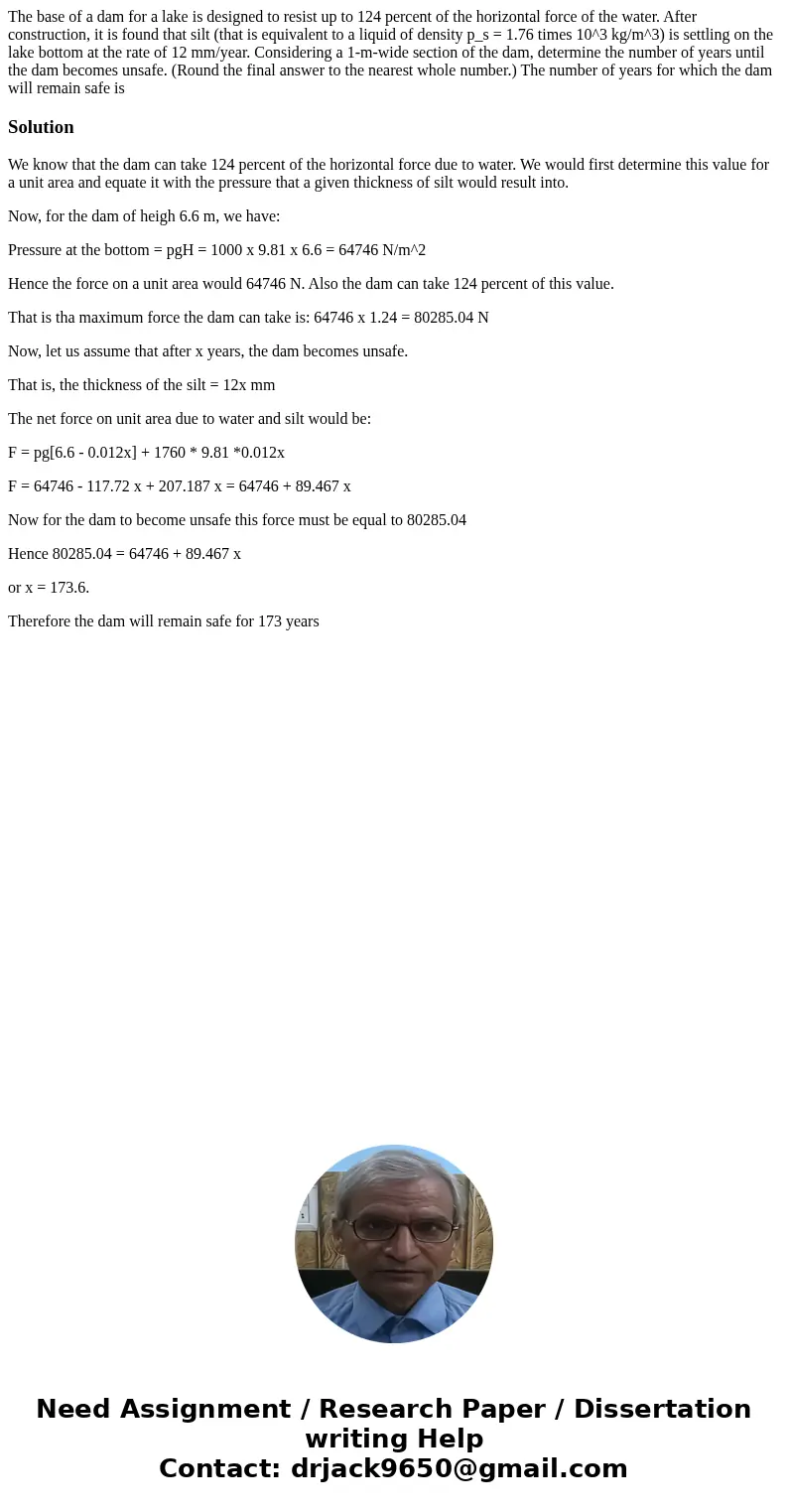The base of a dam for a lake is designed to resist up to 124
Solution
We know that the dam can take 124 percent of the horizontal force due to water. We would first determine this value for a unit area and equate it with the pressure that a given thickness of silt would result into.
Now, for the dam of heigh 6.6 m, we have:
Pressure at the bottom = pgH = 1000 x 9.81 x 6.6 = 64746 N/m^2
Hence the force on a unit area would 64746 N. Also the dam can take 124 percent of this value.
That is tha maximum force the dam can take is: 64746 x 1.24 = 80285.04 N
Now, let us assume that after x years, the dam becomes unsafe.
That is, the thickness of the silt = 12x mm
The net force on unit area due to water and silt would be:
F = pg[6.6 - 0.012x] + 1760 * 9.81 *0.012x
F = 64746 - 117.72 x + 207.187 x = 64746 + 89.467 x
Now for the dam to become unsafe this force must be equal to 80285.04
Hence 80285.04 = 64746 + 89.467 x
or x = 173.6.
Therefore the dam will remain safe for 173 years

 Homework Sourse
Homework Sourse